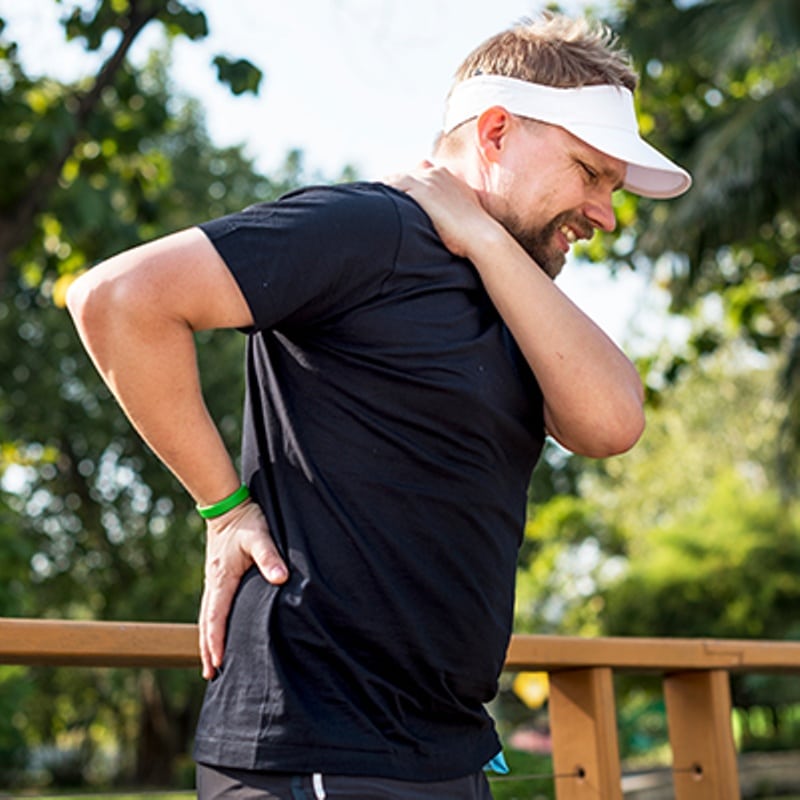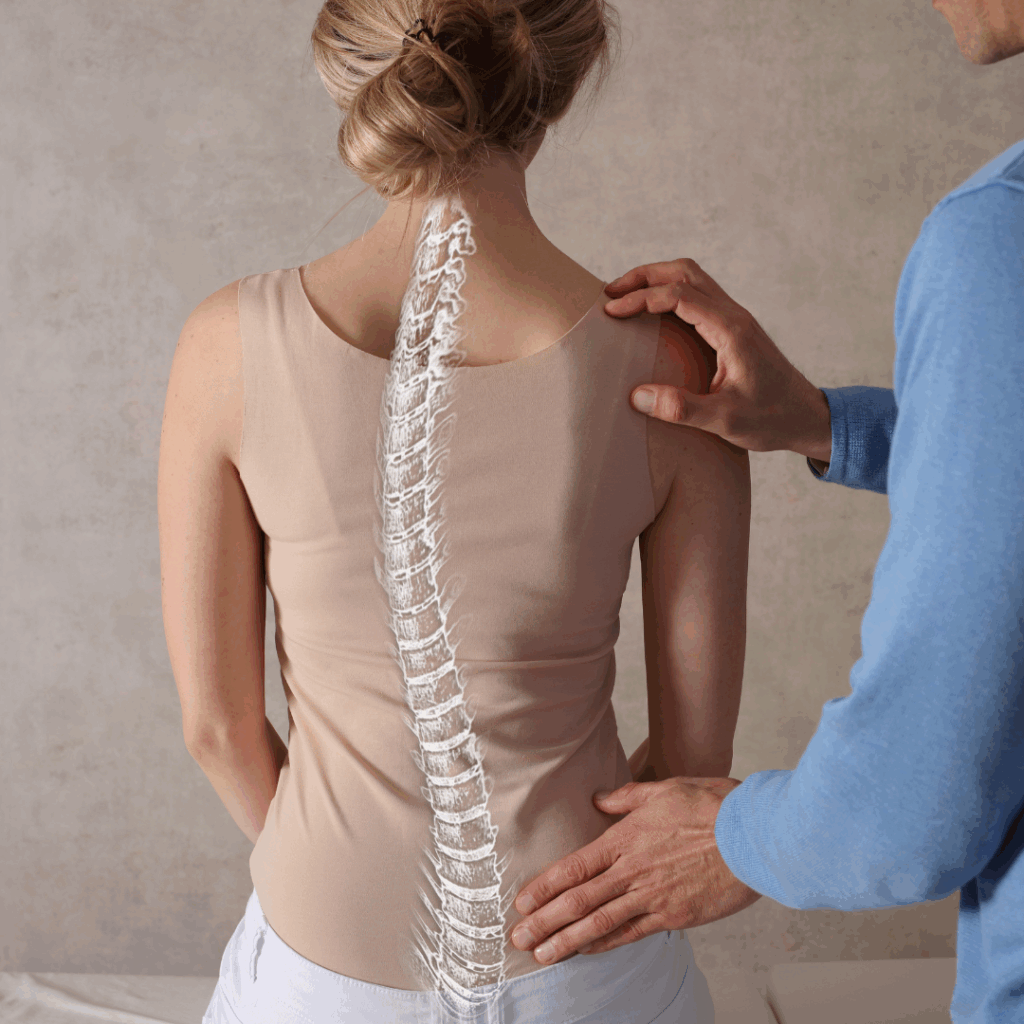If you're experiencing sports-related back pain, rest assured that you're not alone, and there are effective ways to manage this discomfort naturally. As your local chiropractor, I want to share some valuable strategies that can help you alleviate pain and enhance your athletic performance.
First and foremost, maintaining proper posture during physical activities is crucial. Poor posture can lead to unnecessary strain on your back. Additionally, strengthening your core muscles is key; these muscles support your spine and can significantly reduce the risk of injury.
Using the right equipment tailored to your specific sport is also essential for protecting your back. Whether it's the right shoes or supportive gear, appropriate equipment can make a big difference.
Don't forget about the importance of stretching before and after your activities. Stretching helps improve flexibility and can prevent tightness and stiffness in your back.
Finally, allowing adequate time for recovery is vital. Your body needs time to heal, and incorporating rest days into your training routine can help you avoid chronic pain.
Are you curious about how these methods can work together to improve your back health? Let's delve into these practical approaches to help you find the relief you deserve through natural healing and chiropractic care.
Understand Your Back Pain
Understanding Your Back Pain: A Chiropractor's Perspective
As a local chiropractor, I often see how back pain can weigh heavily on your performance, particularly for athletes. It's crucial to understand the source of your back pain to effectively address it and get you back to doing what you love.
Begin by identifying where the pain is located: is it in your lower back, mid-back, or upper back? Each area can indicate different underlying issues. For example, pain in the lower back may be related to muscle strain or even a herniated disc, while discomfort in the mid-back could stem from poor posture or repetitive strain.
Next, let's examine the nature of your pain. Is it a sharp, sudden sensation, or does it present as a dull ache? Sharp pain often signals an acute injury, while a dull ache may suggest chronic problems that have developed gradually.
Take note of when the pain intensifies. Does it worsen during specific activities, like lifting weights or sprinting? This information is invaluable in helping to identify the root cause.
It's also important to pay attention to any additional symptoms. For instance, tingling or numbness in your legs or arms might indicate nerve involvement, which is something we take seriously in chiropractic care.
Additionally, reflect on your training regimen. Are you pushing your body without allowing for proper recovery? Overtraining can lead to back pain and other injuries that could be avoided.
If you're unsure about the cause of your pain, I encourage you to consult a healthcare professional, like myself. As a chiropractor, I can provide a thorough assessment, diagnose the problem, and guide you toward effective, natural treatment options.
Incorporate Stretching Routines
As a local chiropractor, I want to emphasize the importance of incorporating stretching routines into your daily life to alleviate back pain and enhance your overall flexibility. Many patients are surprised to learn that stretching can significantly improve blood flow to your muscles, reduce tension, and increase your range of motion, all of which contribute to a healthier back.
To get started, I recommend beginning your workouts with dynamic stretches. These warm-up movements, such as torso twists and arm circles, prepare your body for activity and can help prevent injury.
After your workouts, be sure to transition into static stretches. Taking the time to hold each stretch for at least 15-30 seconds allows your muscles to relax and lengthen, providing a cool-down that's vital for maintaining flexibility.
It's also essential to focus on stretches that target specific areas contributing to back pain. For example, tight hamstrings can pull on your pelvis, leading to lower back strain. By incorporating stretches for the hamstrings, hip flexors, and quadriceps, you can alleviate pressure on your spine and improve your posture.
Consider exploring practices like yoga or Pilates, which are excellent for enhancing flexibility and promoting body awareness. These disciplines incorporate a variety of stretching techniques that can be particularly beneficial for your back.
Remember to listen to your body while stretching. If you encounter pain during a particular stretch, it's important to modify or ease off to avoid injury.
Consistency is crucial, so aim to include stretching in your routine at least three times a week. By making stretching a regular part of your life, you'll likely experience lasting relief from back pain and develop a more agile, resilient body.
As your chiropractor, I'm here to guide you through the process and help you understand how natural healing can support your overall well-being. Let's work together to make stretching a vital component of your health journey.
Strengthen Core Muscles
As a local chiropractor, I want to emphasize the importance of strengthening your core muscles to help alleviate sports-related back pain.
A strong and stable core is crucial as it provides the necessary support for your spine, which can significantly reduce your risk of injury.
Let's take a closer look at some effective core exercises that can aid in your pain relief journey and enhance your overall well-being.
Importance of Core Stability
As a chiropractor, I want to emphasize the importance of core stability for your overall health and wellness, especially if you're active in sports or physical activities. A strong core is crucial not only for enhancing your performance but also for preventing injuries.
Your core muscles, which consist of your abdominals, obliques, and lower back, play a vital role in providing stability and balance during movement. When your core is stable, it allows for effective force transfer from your lower body to your upper body, resulting in smoother and more powerful movements.
On the other hand, if your core lacks strength, it can lead to poor posture, which often contributes to back pain and discomfort. Weak core muscles can cause other areas, like your back and hips, to overcompensate, raising your risk of injury.
Moreover, a stable core supports your spine, helping to alleviate strain during high-impact activities. By incorporating core stability exercises into your routine, you'll not only improve your athletic performance—such as agility, speed, and endurance—but also boost your confidence, allowing you to challenge yourself without the fear of getting hurt.
As your chiropractor, I encourage you to prioritize core stability. It's not just about building strength; it's about laying a solid foundation for your entire body.
Whether you're an athlete or just looking to maintain your health, understanding and strengthening your core is a smart and essential step towards a healthier, more active life.
Effective Core Exercises
As a local chiropractor, I want to emphasize the importance of strengthening your core muscles for not only improving your athletic performance but also for enhancing your daily activities and overall well-being.
A strong core plays a crucial role in stabilizing your body, minimizing the risk of injuries, and alleviating back pain, which is often a common complaint among many of my patients.
One of the most effective exercises you can incorporate into your routine is the plank. Begin by holding a plank position for 30 seconds, ensuring that your body forms a straight line from your head to your heels. As you build strength, aim to gradually increase the duration of your hold.
Another great exercise is the bridge. Lie flat on your back, bend your knees, and lift your hips towards the ceiling while squeezing your glutes at the top of the movement. I recommend aiming for three sets of 10-15 repetitions to help strengthen your lower back and glutes.
Bicycle crunches are also beneficial. Start by lying on your back, bringing your knees towards your chest, and then alternate by touching your elbows to the opposite knee. This exercise effectively engages both your upper and lower abdominal muscles, providing a comprehensive workout for your core.
Lastly, don't overlook the side plank. This exercise specifically targets your obliques and enhances lateral stability, which is crucial for maintaining balance and preventing injuries. Aim to hold each side for 20-30 seconds.
Incorporating these exercises into your routine not only helps in strengthening your core but also complements the chiropractic care I provide, promoting a healthier spine and overall body function.
Your journey towards natural healing and improved health begins with understanding and nurturing your core.
Use Proper Techniques
As a local chiropractor, I want to emphasize the importance of using proper techniques in your sports activities to help prevent back pain and promote overall wellness. Whether you're running, lifting weights, or participating in a team sport, focusing on your form is crucial. Maintaining a neutral spine and engaging your core muscles can provide the stability your back needs, enhancing your performance while protecting your health.
When lifting or carrying objects, remember to bend at your knees rather than your waist. This technique helps keep your spine aligned and reduces unnecessary strain. For sports that involve twisting movements, like tennis or golf, it's best to rotate from your hips instead of your lower back. This approach not only lowers the risk of injury but also boosts your power and efficiency during play.
Additionally, each sport has its own specific movements to consider. For instance, in basketball, aim to land softly after jumps to help absorb impact and protect your joints. In swimming, utilizing proper technique in your strokes can alleviate pressure on your back.
Always take the time to warm up before starting your activities; this prepares your muscles and joints, reducing the likelihood of injury. Incorporating stretches into your routine will enhance your flexibility and alleviate tension in your back.
Lastly, don't hesitate to seek feedback from coaches or experienced teammates. They can provide valuable insights into your technique and suggest corrections if necessary.
Invest in Quality Equipment
As a local chiropractor, I want to emphasize the importance of investing in quality equipment to enhance your athletic performance and safeguard your back health. Many patients are surprised to learn that the gear they choose for sports can significantly influence their physical well-being.
When you opt for equipment designed specifically for your activity, it not only boosts your performance but also plays a crucial role in preventing injuries, including back pain.
Here are three essential items I recommend you consider when investing in your sports gear:
- Supportive Footwear: The foundation of your body starts with your feet. Shoes that offer proper arch support and cushioning can greatly improve your overall alignment. This is especially important for preventing strain on your back during high-impact sports. A good pair of shoes can make a world of difference in how your body feels during and after your activities.
- Ergonomic Sports Gear: Whether you're swinging a tennis racket, hitting a golf ball, or cycling, selecting ergonomic equipment is key. Gear that's designed to reduce strain on your body helps maintain a natural posture, which is vital in preventing the development of back pain. Choosing the right tools can help you enjoy your sport without the burden of discomfort.
- Protective Padding: For those involved in contact sports or activities that involve falls, investing in protective padding is essential. Quality protective gear, such as back supports, knee pads, and other cushioning equipment, can absorb shocks and minimize the risk of injury. This is especially beneficial in ensuring that your body is adequately protected during play.
By making informed choices about your sports equipment, you can't only enhance your performance but also promote a healthier, pain-free lifestyle.
If you have any questions about how your equipment may be affecting your back health, feel free to reach out to me. I'm here to help you on your journey to natural healing and well-being!
Rest and Recover Effectively
As a chiropractor, I want to emphasize the importance of prioritizing sleep quality and ensuring you're getting enough rest to recover effectively from sports-related back pain.
Quality sleep is essential for your body to heal and rejuvenate. Additionally, incorporating active recovery techniques into your routine can significantly help maintain mobility and reduce stiffness in your back.
These techniques may include gentle stretching, low-impact exercises, or even guided yoga sessions. By focusing on these key aspects, you won't only support your body in its healing process but also enhance your overall strength and resilience.
Prioritize Sleep Quality
As a local chiropractor, I want to emphasize the importance of sleep quality for your overall health and recovery, especially if you're dealing with sports-related back pain.
Prioritizing restful sleep is vital for allowing your muscles and spine to heal properly. When your sleep is compromised, it can't only worsen your pain but also slow down your recovery process. That's why establishing a good sleep routine is essential.
Here are three practical tips to enhance your sleep quality:
- Create a Sleep-Friendly Environment: Your bedroom should be a dedicated space for rest and relaxation. Keep it dark, quiet, and comfortably cool. Consider using blackout curtains to eliminate light and white noise machines to mask any disruptive sounds, creating an ideal atmosphere for sleep.
- Stick to a Consistent Schedule: Consistency is key! Aim to go to bed and wake up at the same time every day, including weekends. This routine helps regulate your body's internal clock, making it easier for you to fall asleep and wake up feeling rejuvenated.
- Limit Screen Time Before Bed: The blue light from your devices can interfere with your ability to fall asleep. I recommend unplugging from screens at least an hour before bedtime. This allows your brain to wind down, making it easier for you to drift off into a restorative sleep.
By making these small adjustments to your sleep habits, you can significantly improve your recovery and overall well-being.
Incorporate Active Recovery
As a local chiropractor, I want to emphasize the importance of rest and recovery in managing sports-related back pain. One effective method to enhance your healing process is by incorporating active recovery techniques into your routine.
Instead of simply resting and staying completely inactive, it's beneficial to engage in low-impact activities that promote blood flow and flexibility. Activities such as walking, swimming, or cycling at a gentle pace can significantly help in reducing stiffness and keeping your muscles engaged, all while minimizing stress on your back.
Additionally, I encourage you to incorporate stretching and mobility exercises into your daily activities. Simple movements like cat-cow stretches or gentle torso twists can work wonders in alleviating tension in your back.
Pay special attention to areas that feel tight, and always listen to your body; if you feel pain, it's important to ease off and adjust your movements accordingly.
Incorporating these active recovery strategies can't only aid in your recovery but also help prevent future injuries.
Seek Professional Guidance
When it comes to managing sports-related back pain, seeking professional guidance is crucial—especially from a chiropractor. Many individuals may not be familiar with the benefits of chiropractic care, but it can play a significant role in your recovery and overall well-being.
Attempting to self-diagnose or treat your pain can often lead to further injury or chronic issues. As a chiropractor, I can provide you with a comprehensive plan tailored specifically to your condition, ensuring a safe and effective recovery.
Here are three key reasons why consulting with a chiropractor is essential:
- Accurate Diagnosis: A chiropractor specializes in musculoskeletal health and can thoroughly assess your symptoms to identify the underlying cause of your back pain. This accurate diagnosis is vital for implementing effective treatment strategies.
- Customized Treatment Plans: I create personalized treatment plans that may include spinal adjustments, physical therapy techniques, and exercises designed to alleviate pain and restore function. This individualized approach ensures that you aren't wasting time on remedies that may not address your specific needs.
- Preventative Strategies: Once we've worked together to alleviate your pain, I can help you develop strategies to prevent future injuries. This may involve specific exercises to strengthen your back, guidance on proper lifting techniques, and tips to maintain good posture during your sports activities.
Don't allow back pain to hinder your sports performance or diminish your quality of life. By seeking chiropractic care, you can't only find relief from your current discomfort but also gain valuable knowledge and tools to keep you active and injury-free in the future.
Conclusion
As a local chiropractor, I want to share some valuable insights on how to effectively relieve sports-related back pain and improve your overall performance. Here are seven reliable tips that can help you on your journey to better back health.
First and foremost, maintaining proper posture is crucial. Whether you're practicing your sport or sitting at a desk, being mindful of your alignment can prevent strain on your back.
Incorporating stretching and core-strengthening exercises into your routine is also essential. These exercises not only enhance flexibility but also build the muscles that support your spine, reducing the risk of injury.
Investing in quality gear is another important step. Proper footwear and equipment tailored for your specific sport can make a significant difference in how your body feels during and after activity.
Rest and recovery should never be overlooked. Allowing your body time to heal and recuperate is vital for long-term health. Additionally, staying hydrated plays a key role in maintaining muscle function and overall well-being.
If you find that your back pain persists despite these efforts, I encourage you to seek professional guidance. As a chiropractor, I can provide personalized strategies and treatment plans tailored to your individual needs, helping you to manage pain and prevent future issues.
Take charge of your back health today, and embrace a more active, pain-free lifestyle! Your body will thank you.



